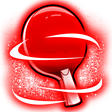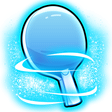Robot Training
Training
 Rick August Asked 1 year ago
Rick August Asked 1 year ago
What do you think of training using a robot? It seems to me that a modern robot like a Butterfly Amicus Prime or a Power Pong Omega is a good substitute for many multiball training drills done with a partner. It certainly doesn't complain about doing drills or if I miss shots when learning something new. But, you don't get the visual cues of playing with a partner so reading spin is difficult if not impossible and random drills are doable but can be difficult.
 Alois Rosario Answered 1 year ago
Alois Rosario Answered 1 year ago
Hi Rick,
You've raised a great point about training with a table tennis robot. These modern robots are sophisticated tools that can significantly enhance your training routine. They offer a range of benefits, especially in terms of providing consistency, repeatability, and volume in stroke play and footwork drills. The ability to practice for hours without relying on a partner can dramatically increase your muscle memory and stamina. However, as you rightly noted, practicing with a robot does have its limitations. One of the key elements absent in robot training is the interaction and the unpredictability inherent in a real game situation.
Reading an opponent's body language, adjusting to their tactical changes, and reacting to human error are all crucial components of match play that a robot simply can't replicate. Also, accurately reading and responding to spin without the visual cues from a human opponent's racket angle and contact is challenging. This skill is fundamental for advancing in table tennis, and it's best developed through play against human opponents or coached multiball sessions where the type of spin can be varied and clearly communicated.
While robots are excellent for drill repetition and building basic skills and specific techniques, incorporating regular practice sessions with players of equal or higher skill levels, or under a coach’s guidance, is essential. Such sessions can challenge you in ways a robot cannot, preparing you better for the dynamic nature of actual competitive matches.
While robots are invaluable training tools, complement them with human play to create a well-rounded training program. Balancing both these training methods will keep your skills sharp and your reactions keen for when it's game time.
Recommended Video
Tournament Expectations
In this master class we talk about what to expect from a tournament. From how many events you should enter to what to do when your called up for a match. Watch this video now to hear our thoughts.
Watch NowThoughts on this question
Become a free member to post a comment about this question.
Great question Rick, and great answer Alois. Given the difficulty in finding training partners in many of the clubs I go to, the best combination for improvement is coaching, robot practice and playing lots of games (socially and competitively). Amicus/Power Pong are the best there is, and through their shuffle/random/scatter features are just as good as playing against a human, bearing in mind the limitations of the robot. Paul Pinkewich ( Stiga/TTW) has new range from Y&T ( Xiaoru Niu No2 and No 5), which, whilst not as high end as Amicus/PPO, with these robots one is able to create game-simulation drills. They are now the best robots on the market for someone who is not able to invest $3500 in Amicus/Power Pong, they are sufficiently challenging for someone as high as Division 2-3 in NSW.
Hi Alois, thanks for the reply. I look at robot training as just another training tool like multiball, serve practice, etc, but you still need to play matches against real people to learn to play well. We are lucky that robots are getting so sophisticated and can throw balls with different speeds, spins and trajectories and with random functions that can vary where the balls are thrown. You can simulate entire points with some of these robots. In fact, the Butterfly Amicus Prime which I own, has a feature called Wait that waits for you to serve before it starts a drill. It waits for the sound of the second bounce of your serve before it throws you a ball so that you can practice third ball attacks. Pretty amazing and a great training tool for learning different strokes and footwork but is not a substitute for playing real matches.
Great points Rick. There is no substitute for playing against a real person!
Thanks for sharing your thoughts Philip.